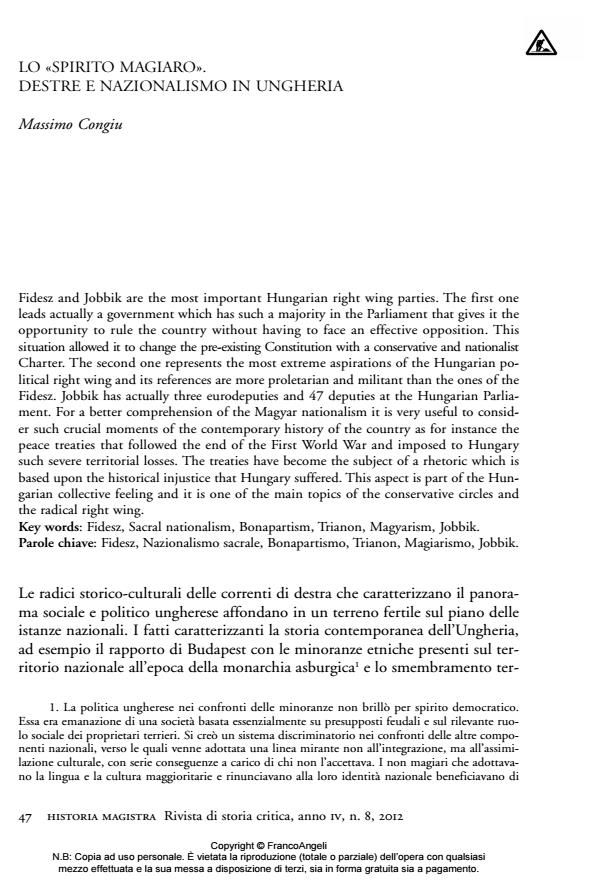Lo "spirito magiaro". Destre e nazionalismo in Ungheria
Journal title HISTORIA MAGISTRA
Author/s Massimo Congiu
Publishing Year 2012 Issue 2012/8 Language Italian
Pages 13 P. 47-59 File size 135 KB
DOI 10.3280/HM2012-008005
DOI is like a bar code for intellectual property: to have more infomation
click here
Below, you can see the article first page
If you want to buy this article in PDF format, you can do it, following the instructions to buy download credits

FrancoAngeli is member of Publishers International Linking Association, Inc (PILA), a not-for-profit association which run the CrossRef service enabling links to and from online scholarly content.
Fidesz and Jobbik are the most important Hungarian right wing parties. The first one leads actually a government which has such a majority in the Parliament that gives it the opportunity to rule the country without having to face an effective opposition. This situation allowed it to change the pre-existing Constitution with a conservative and nationalist Charter. The second one represents the most extreme aspirations of the Hungarian political right wing and its references are more proletarian and militant than the ones of the Fidesz. Jobbik has actually three eurodeputies and 47 deputies at the Hungarian Parliament. For a better comprehension of the Magyar nationalism it is very useful to consider such crucial moments of the contemporary history of the country as for instance the peace treaties that followed the end of the First World War and imposed to Hungary such severe territorial losses. The treaties have become the subject of a rhetoric which is based upon the historical injustice that Hungary suffered. This aspect is part of the Hungarian collective feeling and it is one of the main topics of the conservative circles and the radical right wing.
Keywords: Fidesz, Sacral nationalism, Bonapartism, Trianon, Magyarism, Jobbik.
Massimo Congiu, Lo "spirito magiaro". Destre e nazionalismo in Ungheria in "HISTORIA MAGISTRA" 8/2012, pp 47-59, DOI: 10.3280/HM2012-008005